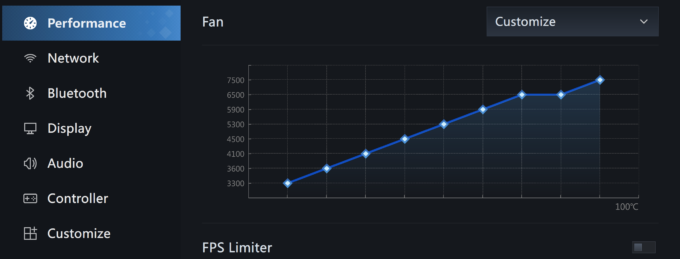Lenovo Legion Go review – Surpassed Our Expectations with Stellar Gaming Performance and Unrivaled Display
Temperatures and comfort, Battery Life
Max CPU load
In this test we use 100% on the CPU cores, monitoring their frequencies and chip temperature. The first column shows a computer’s reaction to a short load (2-10 seconds), the second column simulates a serious task (between 15 and 30 seconds), and the third column is a good indicator of how good the laptop is for long loads such as video rendering.
Average core frequency (base frequency + X); CPU temp.
| AMD Ryzen Z1 Extreme | 0:02 – 0:10 sec | 0:15 – 0:30 sec | 10:00 – 15:00 min |
|---|---|---|---|
| Lenovo Legion Go | 3.32 GHz @ 66°C @ 35W | 3.11 GHz @ 76°C @ 32W | 2.25 GHz @ 67°C @ 22W |
| ASUS ROG Ally (2023) | 4.08 GHz @ 64°C @ 48W | 3.66 GHz @ 94°C @ 41W | 3.19 GHz @ 80°C @ 30W |
The AMD Ryzen Z1 Extreme inside the Lenovo Legion Go can sustain lower clocks compared to the ASUS ROG Ally (2023). On the other hand, the CPU temperatures of the Lenovo device in medium and long loads are notably lower.
Comfort during full load
You can hear the single fan during gaming and the noise is average. You can also set a desired custom fan curve. During heavy loads, the device’s surface doesn’t become scorching hot which is good.
Battery
Now, we conduct the battery tests with the Windows Better performance setting turned on, screen brightness adjusted to 120 nits and all other programs turned off except for the one we are testing the notebook with. This device’s 49.2Wh battery lasts for 5 hours and 16 minutes of Web browsing or 4 hours and 46 minutes of video playback. To achieve that, you have to apply the “Power-saving” preset in the Legion Space app.
In order to simulate real-life conditions, we used our own script for automatic web browsing through over 70 websites.


For every test like this, we use the same video in HD.












